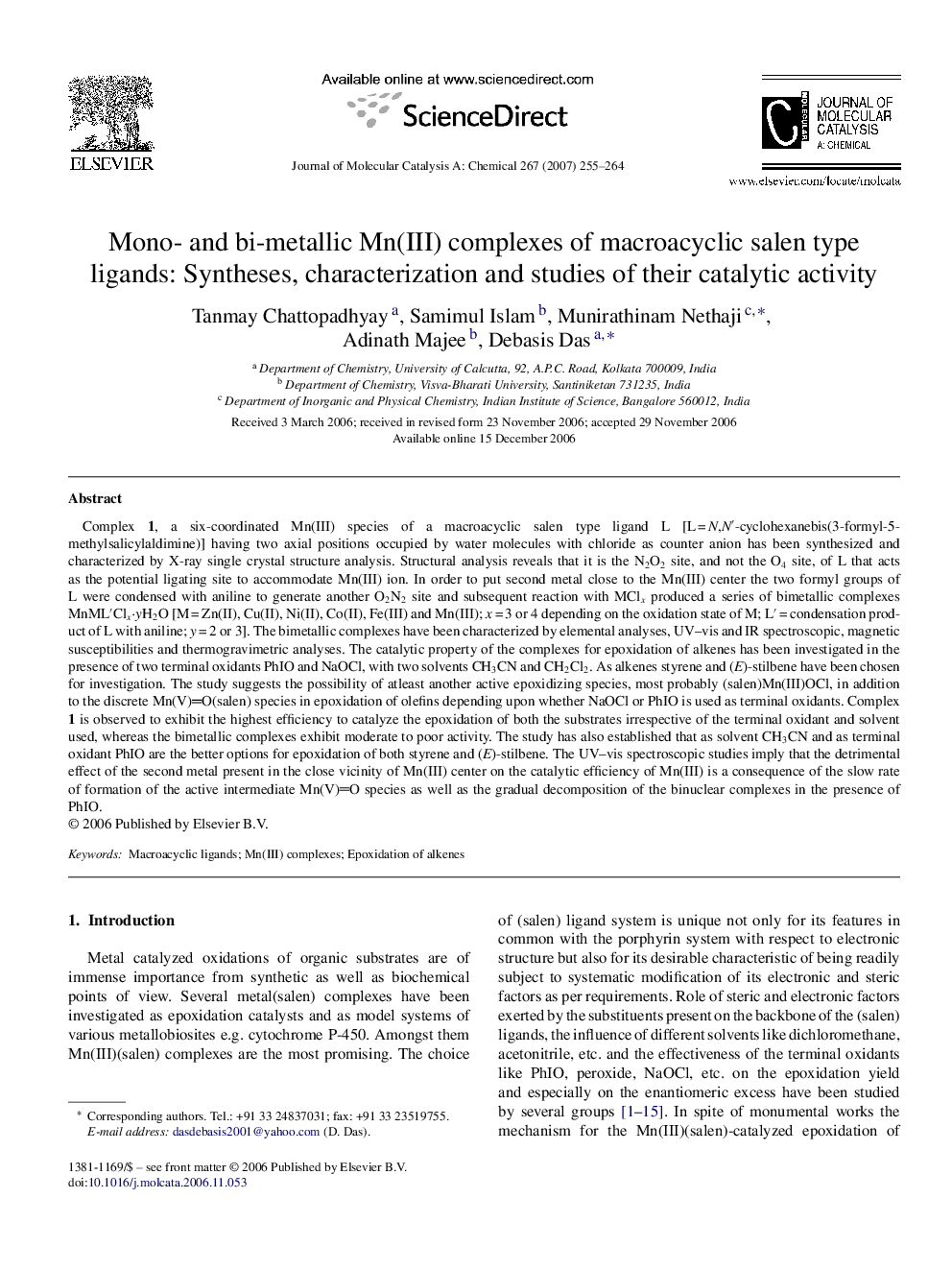| کد مقاله | کد نشریه | سال انتشار | مقاله انگلیسی | نسخه تمام متن |
|---|---|---|---|---|
| 68805 | 48523 | 2007 | 10 صفحه PDF | دانلود رایگان |

Complex 1, a six-coordinated Mn(III) species of a macroacyclic salen type ligand L [L = N,N′-cyclohexanebis(3-formyl-5-methylsalicylaldimine)] having two axial positions occupied by water molecules with chloride as counter anion has been synthesized and characterized by X-ray single crystal structure analysis. Structural analysis reveals that it is the N2O2 site, and not the O4 site, of L that acts as the potential ligating site to accommodate Mn(III) ion. In order to put second metal close to the Mn(III) center the two formyl groups of L were condensed with aniline to generate another O2N2 site and subsequent reaction with MClx produced a series of bimetallic complexes MnML′Clx·yH2O [M = Zn(II), Cu(II), Ni(II), Co(II), Fe(III) and Mn(III); x = 3 or 4 depending on the oxidation state of M; L′ = condensation product of L with aniline; y = 2 or 3]. The bimetallic complexes have been characterized by elemental analyses, UV–vis and IR spectroscopic, magnetic susceptibilities and thermogravimetric analyses. The catalytic property of the complexes for epoxidation of alkenes has been investigated in the presence of two terminal oxidants PhIO and NaOCl, with two solvents CH3CN and CH2Cl2. As alkenes styrene and (E)-stilbene have been chosen for investigation. The study suggests the possibility of atleast another active epoxidizing species, most probably (salen)Mn(III)OCl, in addition to the discrete Mn(V)O(salen) species in epoxidation of olefins depending upon whether NaOCl or PhIO is used as terminal oxidants. Complex 1 is observed to exhibit the highest efficiency to catalyze the epoxidation of both the substrates irrespective of the terminal oxidant and solvent used, whereas the bimetallic complexes exhibit moderate to poor activity. The study has also established that as solvent CH3CN and as terminal oxidant PhIO are the better options for epoxidation of both styrene and (E)-stilbene. The UV–vis spectroscopic studies imply that the detrimental effect of the second metal present in the close vicinity of Mn(III) center on the catalytic efficiency of Mn(III) is a consequence of the slow rate of formation of the active intermediate Mn(V)O species as well as the gradual decomposition of the binuclear complexes in the presence of PhIO.
Figure optionsDownload as PowerPoint slide
Journal: Journal of Molecular Catalysis A: Chemical - Volume 267, Issues 1–2, 18 April 2007, Pages 255–264